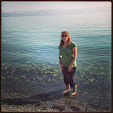Last week I had an opportunity to visit two of the villages near our out-patient clinic. The clinic is about a kilometer from the hospital. We are in the process of starting a community health worker (CHW) program. The purpose of the program is to train volunteers from the surrounding communities to be health educators for their villages. These volunteers will be our eyes and hears in the community and help us better meet the physical needs of our community. In graduate school I read a lot of articles about using CHW’s in international settings and I am so excited to be a part of rolling out this program.
We have already met several times with the village elders to explain the purpose of the program and what we expect from the CHW’s. Most of the elders seemed really excited about it and were eager to be involved. It was up to the elders to select the volunteers, based on certain criteria. The elders also provided us with some topics and programs that they thought were the biggest health needs for their villages.
The first village we went to is a Tajik village and we met with 12 women in the house of one of the women. The education we will do in this community will occur after their religious studies at the mosque. It was exciting to hear that they have already identified a time and a place that we can meet with a large group of women. During the meeting the women had a lot of questions about the H1N1 flu. An interesting question they asked was if swine flu was a real disease or just some political agenda item. I was able to explain it is a real disease and I also took the opportunity to tell them a few key ways to prevent the spread; i.e. hand washing and covering your mouth when you cough or sneeze. I felt a little silly talking about the importance of eating right and getting a good night sleep when the poverty in this village really limits what they have available to eat.
The second village we went to is a Hazara village. Here we met in the education building which is next to the mosque and we met with 8 about men. The topics they are most interested in are hypertension and respiratory illnesses (asthma and COPD). H1N1 was never mentioned. Air pollution is a huge problem here and many adults have chronic respiratory issues.
Later that afternoon the 14 trainee’s arrived for their first session. The goal was to again explain the expectations and determine how many times a week they would be able to attend class. It was exciting to me that the majority of the trainee’s are female and that one of the village elders wants to be a trainee. The part that was funny was that the only thing they seemed interested in was when they would learn how to start IV’s and give injections. We spent a lot of time explaining that we aren’t going to teach those skills, at least not yet. I don’t think I have ever seen such enthusiasm around “poking” people.
This week we have had 2 training sessions, the attendance and level of interest seems to be holding even if they can't "poke" people.
Keep Smiling!
skip to main |
skip to sidebar
Welcome! This blog describes my travels, work and life experiences. Hope you find it interesting and informative.
